[Editorial] “The Blood Ceiling”: Women in Horror and the Fight for Recognition Behind the Camera
“It is women who love horror. Gloat over it. Feed on it. Are nourished by it. Shudder and cling and cry out-and come back for more.”—Bela Lugosi
Hannah Macpherson’s frustration grew as she sat in the lobby of Blumhouse Productions and took in the black and white photographs adorning the wall. These beautiful, candid set shots mounted on plaques showed the production company’s history of producing iconic horror of the 2000s and 2010s. Despite their comparatively low budgets, movies such as Paranormal Activity (2007), Sinister (2012), Insidious (2010), Get Out (2017), and many more terrified audiences with their creativity and clever writing.
The year was 2016, and as she scanned the wall, she searched for female faces among the directors and found none. She sat back and took in the whole wall. Nothing. Eventually, they called her in to her meeting with the executives at Blumhouse TV. Macpherson, a direct woman with a take-no-guff attitude, entered with her first words being, “How do you feel about the fact that there is not a single female director on that front wall?”
This question would come back to haunt the founder of the company, Jason Blum, in 2018. At the time, the company had not theatrically released any horror movie directed by a woman. When asked about this by Matt Patches at Polygon during an interview promoting the 2018 sequel/reboot of Halloween, Blum replied, “There are not a lot of female directors period, and even less inclined to horror.” He named a few like Jennifer Kent that he’d tried to hire but turned him down. The backlash was swift. People on social media named a multitude of talented female horror directors—Karyn Kusama, the Soska Sisters, Julia Ducournau, and others. Blum apologized for his comment.
Women have always had a place in horror. They’ve been the revolutionaries that drive the genre like Mary Shelley’s Frankenstein and critics like Carol J. Clover and her seminal academic work, Men, Women, and Chainsaws. The problem is that many of these women’s accomplishments are ignored or erased. Well, let’s be honest. The work of women in general is often left out of the narrative. Horror is just a microcosm of this issue. Emily Zarka, a literature professor who wrote her dissertation on the undead and runs the PBS web series, Monstrum, calls this “the blood ceiling.” It’s a play on the glass ceiling, the invisible barrier that prevents women from reaching positions of power.
Zarka is the type of person that describes the horrifying Manananggal, a long tongued, self-segmenting vampiric monster with bat wings and dangling intestines with the same excitement as a kid on Christmas morning. Her love of the undead started with a childhood encounter with Salem’s Lot and an episode of Archie’s Weird Tales parodying Invasion of the Bodysnatchers where alien potatoes replace the town of Riverdale. To this day, Zarka cannot stand the sight of sprouted potatoes. “That’s one of the things I love about horror,” she says, laughing, “Even though I know that it scared me, I still loved it.”
Her area of expertise is gothic literature, which she argues emerged at around a turning point for female writers where they began seeing success and recognition for their work. “I think that women shaped the gothic genre and their legacy is still reflected today in horror movies and sci-fi,” she says. Though most of the well-known names are male—Bram Stoker, HG Wells, Robert Lewis Stevenson, Edgar Allen Poe, to name a few—women are the cornerstones of the genre, and not just Mary Shelley or the Bronte sisters.
The name Ann Radcliffe doesn’t mean much to people outside literary circles, but without her, the gothic genre would be relegated to the literary trash piles. Although Horace Walpole’s The Castle of Otranto(1764) is considered the first gothic novel, her book The Mysteries of Udolpho(1794) was a critical and commercial success that elevated the genre into what it is today. Sir Walter Scott said of her in 1824 that she is “among the favored few who have been distinguished as the founders of a class or school.” She helped pave the way for the female masters of horror that came after her.
Representation matters both within a story and for those who tell them. Women need to see themselves both as the final girl turning the tables on the slasher and the director yelling “Cut!” from behind the camera. In the popular consciousness, women do not like horror to a point of almost rom-com cliché. Boy meets girl. Boy asks girl to a movie. He picks a horror movie and is delighted by the scared girl cringing into his neck until the credits roll. The thing about stereotypes, though, is that they are rarely accurate, but can be damaging. As a young girl, Zarka kept her love of the monsters a secret for fear of being labelled as weird. She now dedicates her career to showing how important monsters are in society and lifting the voices of women who have historically been ignored by the genre.
On camera, women dominate horror. In 2018, Google and the Gina Davis Institute released a study on the representation of women in movies. Unsurprisingly, men took up the majority of the screen time with one exception: horror. Out of every film genre, women had the most representation with an average of 53 percent of the screen time. Of course, not all representation is good representation as Macpherson points out. “I would be so curious,” she says, “if it was further broken down, how much of it is violence against women?”
Many horror films feature female specific anxieties. 1975’s The Stepford Wives, for example, discusses the oppression of strict gender roles in suburbia while 1968’s Rosemary’s Baby centers around the horrors of pregnancy. More recently, 2015’s The Witch explores how a restrictive, puritanical society scapegoats women. While these are all classics and explore themes that resonate with women, they’re also all written and directed by men—Rosemary’s Baby, notably, by convicted rapist and fugitive from justice, Roman Polanski.
Sonia Lupher, a quiet academic whose favorite monster is Jason Vorhees, wrote her dissertation on female directed horror and began the database of women who make scary movies, Cut-Throat Women. She believes that the fact that women are front and center is a side effect of the genre’s goal of scaring the viewer. “Because women are easier victims or more vulnerable, I think that’s why they’re featured in horror,” she says.
The genre walks a tightrope between empowering and misogynistic. For example, the final girl trope can be inspiring because they’re the survivors who face the monster and win…at least until the sequel. We can’t all be Wonder Woman, but we can be brave and clever like Laurie Strode or Nancy Thompson. On the other hand, the violence against women who aren’t virginal can come across as punishing them for owning their sexuality. Thankfully, writers and directors have become aware of these undertones, and begun to subvert them. Films like Scream (1996), The Cabin in the Woods (2011) and Final Girls (2015) play with and parody the slasher tropes, showing an awareness of the problematic elements of the genre.
Women behind the camera is a different story. According to the website Women and Hollywood, from 2007 to 2018, only 4.3 percent of all Hollywood directors were female. Of that small percentage, according to Mallory O’Meara, a film producer and author of The Lady from the Black Lagoon, women are least likely to go into horror film making.
However, that doesn’t mean that women haven’t made an impact in the history of Hollywood horror. They’ve been in film making from the start of the medium.
Alice Guy Blaché, who was born in France in 1873, is considered by many not only to be the first female filmmaker, but the first narrative filmmaker, period, with her 1896 short film, La Feé aux Choux or The Cabbage Fairy. In it, a woman dressed like a fairy dances gracefully and delivers infants out of cabbages. In those early eras of film, directors made stories out of all genres, and Guy Blaché is no exception. She was incredibly prolific in both France and the United States, making about 1,000 movies in the span of her career, including horror. Sadly, like most early silent films, a lot of her work was lost, but the first reel of her 1913 adaptation of The Pit and the Pendulum survives as well as her 1903 short, Mephistopheles.
In 1940, the gothic psychological thriller Rebecca, hit theaters to critical acclaim. The adaptation of Daphne Du Maurier’s novel of the same name was Alfred Hitchcock’s first American project, which won him two Oscars for Best Picture and Best Cinematography and nine more nominations. A name like Alfred Hitchcock towers over all others, but he didn’t make this movie alone. A lesser known but incredibly important name throughout his career was Joan Harrison. They met when she applied to become his secretary, and he came to trust and value her insights. Eventually, she graduated from secretary to screenwriter and producer. She co-wrote Rebecca with Robert E. Sherwood and became the first female writer to be nominated for an Oscar for her work.
She went on to become a film and television producer—the only woman in that line of work for a portion of her career. When Hitchcock decided to bring his brand of suspense to television with the Alfred Hitchcock Hour, he called her to help produce. Although she was a trailblazer, her name is not nearly as well-known as it should be. The first biography of her life, Phantom Lady: Hollywood Producer Joan Harrison, the Forgotten Woman Behind Hitchcock by Christina Lane came out in just 2020, and half the references on her sparse Wikipedia page are her obituary.
Unlike Harrison, the name Millicent Patrick was actively erased by the spiteful head of Universal’s makeup department, Bud Westmore. He was born into a makeup design empire begun by his father, George Westmore and was not the studio’s first choice in Westmore progeny to head their makeup department. That fact gave him a massive chip on his shoulder which he took out on promising talent. Patrick was one of his many victims. She is best known for designing the Gill-Man from 1954’s The Creature from the Black Lagoon, but also worked on the designs for the Globs from It Came from Outer Space (1953), Mr. Hyde from Abbot and Costello Meet Dr. Jekyll and Mr. Hyde (1953), and the Metaluna Mutant in This Island Earth (1955). A woman with the glamour of a Hollywood starlet, people marveled that someone so fabulous could make such terrifying monsters. Initially, she was going to go on The Creature From the Black Lagoon’s publicity tour with the gimmick of being “The Beauty that Created the Beast” but Westmore nixed the idea because he didn’t want her to take credit for the creature she designed. Her looks and sparkling personality won over the people and overshadowed Westmore anyway.
He fired her as soon as she returned from her tour, “The Beauty that Lives With the Beasts,” to appease his own ego and forbade her from taking credit for her work. She never made another monster, and her name was scrubbed from history to a point where, until O’Meara’s recent biography, people debated about whether she designed the creature or just was the girlfriend of someone on set. Thankfully, her story didn’t end with her destitute and dying alone like so many of these do. Fans back then recognized her as the real designer of the Gill-Man and now she is getting her due with the mainstream public.
These are, of course, just a few early examples. Names like Ida Lupino, the only woman to have directed a Twilight Zone episode, and Stephanie Rothman, a respected director in the exploitation genre who never broke into mainstream films specifically because she was a woman, are slowly being rediscovered as well. “I think the challenge of finding these female stories is finding the institution or the repository, or that small mention in a book that then you get to trace down,” Zarka says. Men’s work is more likely to be valued and therefore preserved, but women have always used the genre to explore their own fears.
While horror has a mixed relationship with people who are marginalized, be they women, people of color, queer people, and people with physical disabilities or mental illness, it also appeals to them. It pushes the limits of the way stories are told and captures society’s anxieties in a visceral way. Zarka’s philosophy on monsters is that they are, above all, educational. They’re not just scary, they’re choices. What does a society value? What does it fear? What is taboo? “They’re not just scary stories to tell in the dark,” she says.
Between the stigma around female bodies, the struggle for autonomy and the fear of violence, women have plenty to fear. And if you’re also queer, disabled, a person of color, or all of the above, that fear of violence is compounded at each intersection. In her review of Darkly by Leila Taylor, Ashlee Blackwell writes, “From the Middle Passage to Black Lives Matter, the experiences of Black people are drenched in the morose, using music, photography, poetry, film, and much more as an expression of it.” Blackwell is the founder of The Graveyard Shift Sisters, an academic resource for studying black women in horror. One of her goals is to “Uncover themes in horror and science fiction unique to the experiences of Black women and women of color.” In the words of R. Shanea Williams, a black female director, the question becomes, “How do we survive what we’re most afraid of?”
Picture an actress walking home alone at night in Queens, New York, ignoring catcalls. It could be a scene in any woman’s life. A man walks up to her and violently turns her around. The viewer expects her to become a victim. But then he is frozen by her gaze. A group of women drive up in a van and throw him in. The man awakens on an altar surrounded by cultists. An old woman approaches, and when their eyes meet, a spell is cast, reducing the man to a desiccated corpse while the woman restores her youth.
This is the 2020 short film, The Gaze, directed by Christina Raia and can be found along with her other short films on her Vimeo page. The New York City based writer and director is one of the co-founders of Congested Cat Productions. Raised by a single mother from Trinidad and of Indian descent, Raia was encouraged by her mother to follow her passions and work in film. Raia uses filmmaking, especially short films as a sort of therapy, blending comedy and horror to work out her anxieties. “Naturally, being a woman in the world is horrifying,” she says. “You know going to get your groceries could turn into a horror movie.”
Being a woman of color, she cannot escape the political. Instead, her goal is to “find light in the darkness” through her art. Her production company is small, but the crowd funding for her first feature length film, Summit (2014), helped give her the platform to start it. To be able to afford making movies, a director needs money, investors, fans that will watch the movie, and connections with other people who work in the industry. The challenge is creating one. “We’re out here,” Raia says, “What women in horror and particularly women of color in horror need is a platform.”
Building a platform for women of color in horror makes room for new and fresh perspectives. For example, the 2017 short film, Searching for Isabelle, directed by Stephanie Jeter criticizes the media obsession with missing and murdered white women while ignoring the deaths and disappearances of women of color.
Jeter, who considers herself more of a speculative fiction director, was inspired to write this by her fascination with true crime. As a teenager, she noticed the media frenzy around white girls her age who go missing. “I wondered, just in observing all these other adolescent girls getting all this media attention, if I were to go missing,” she says, “would the world, or this country or even just the media even notice?”
Searching for Isabelle began as a novel, but she then converted it to a short film. The finished product can be found on her Vimeo page. In it, Isabelle, a black woman, is taken by a serial killer who has also kidnapped a white woman. The media is obsessed with the missing white woman, and the police dedicate all their resources to finding her, leaving Isabelle’s loved ones helpless. Isabelle, however, discovers that she can astral project to her friends and helps them find her.
The short film almost didn’t get made. Jeter struggled to get funds and was denied multiple grants, one even on her birthday. She was on the verge of giving up until she spoke with writer/director Victoria Mahoney, who asked, “If you didn’t make this movie, would you be okay with that?”
After some thinking, Jeter replied, “No.”
“Then make the f***ing movie.”
And she did. She made a rough cut, sent it out, and started getting grants. “It took people to see the vision, I think, to really buy into it,” she says.
The biggest challenge of movie making for people without much of a platform, especially women, is raising money. Genre films tend not to be the ones to get grant money, much to the frustration of directors like Jeter and Williams. There’s a bias against horror films even if they’re coming from a different perspective. Although horror is diversifying on screen and behind the scenes, it’s slow going. “To have pieces centered on black women, I’m sure that’s probably why it’s such a challenge for me to get investors and raise money for my projects,” Williams says.
When they do get funding, though, their unique perspectives bring something powerful to the table. Williams uses her 2016 short horror film Paralysis to explore black women’s mental health. In it, a woman named Jessica who suffers from sleep paralysis is haunted by something sinister in her apartment. Horror does not have the best relationship with people with mental illnesses. It’s easier to count the films that handle the subject well than the ones that don’t, but Williams, who struggles with anxiety and depression, feels connected to the issue and wanted it to be reflected in her work. “There’s this idea that black women are supposed to be these strong superwomen,” she says, “and they don’t get the humanity they deserve on screen.”
When the film screened at Black Star film festival in 2016, the energy was electric. This was something no one had really seen before, and the audience was into it. At the discussion panel after, an audience member raised their hand. “Is it that Jessica is being driven to insanity or that there’s something in her home?”
Williams replied, “Why can’t it be both?”
Paralysis went on to win Best Screenplay at the Reel Sisters of the Diaspora Film Festival and Best Actress at Black Star. It’s available to watch on her Vimeo page and on free Amazon Prime.
The question of why there weren’t any female directors at Blumhouse didn’t get Macpherson in trouble. In fact, she made friends with a female producer after that fateful meeting. In January of 2019, the producer sent her a text asking “Hey, do you think you could make a horror movie out of a purity ball? If you don’t know what it is, google it.”
Macpherson didn’t grow up in a religious household, so she pictured a literal silver ball, something she could hold. She was familiar with the concept of purity rings and had an interest in religion stemming from her sister attending some mega-church services with an ex-boyfriend in the Bible Belt, but the idea of father-daughter retreats to ensure that the daughter waits until marriage was new.
She fell down a rabbit hole of research, watching a documentary that was supposed to be pro-purity ball, but found herself terrified by the body language of the fathers towards their daughters, some as young as five. It was a stark contrast to how her father raised her to be independent and treated her as an equal. “I’m not saying that the touching was inappropriate because it was a father and a daughter,” she says, “but in the context of ‘I control your vagina’, it really freaked me out.”
The biggest theme she found among survivors of purity balls was that of shame—shame about sex and shame about their own bodies. Lilith didn’t need to be summoned to be the movie’s monster. Purity balls were scary enough on their own. “What an amazing way to control a huge mass of women. Make them hate themselves,” she marveled, and then texted back to the producer, “Yes, please.”
This idea would eventually become a 2019 episode of Hulu’s Into the Dark anthology called Pure. The production was a whirlwind. Pure is a feature length film made on a television schedule. Macpherson and her team wrote the script in twenty-three days, had three weeks’ worth of preparations, shot the movie in sixteen days, and it premiered in September of that same year. For comparison, the average feature length horror film takes about two years to make. “Honestly, if I didn’t feel so passionate and strong about the material, it would have been much harder,” she says, “but it was easy for me to just focus on the message that you have to stand up to people who tell you they know what you should do with your body.”
Pure tells the story of Shay, a young woman who recently began living with her birth father after the death of her mother. She was the product of an affair and has a half-sister named Jo who is about the same age as her. Her father takes her and her half-sister to a weekend purity retreat where the sisters and their friends summon Adam’s first wife, the demonic Lilith.
Her favorite scene is not the cathartic ending where Lilith gets her vengeance or the eerie nightmares of Shay. It’s a quiet moment between the four main girls while they’re making flower crowns on a beautiful spring day. They debate among themselves about sex and relationships. The preacher’s daughter doesn’t even want to kiss a man before marriage, while Jo doesn’t buy into purity culture and finds it absurd. When the preacher’s daughter asks her why she won’t take it seriously, she replies with the thesis of the film, “I just don’t think men should control everything that we do, especially when it comes to our bodies.”
Macpherson still gets emails and tweets from women who were subjected to purity balls telling her that Pure was the revenge film they needed. To her, reading these messages and knowing that she gave these women some catharsis is the best feeling in the world. And as more female directors break through the blood ceiling, the horror genre can only become richer and more exciting with each fresh perspective.


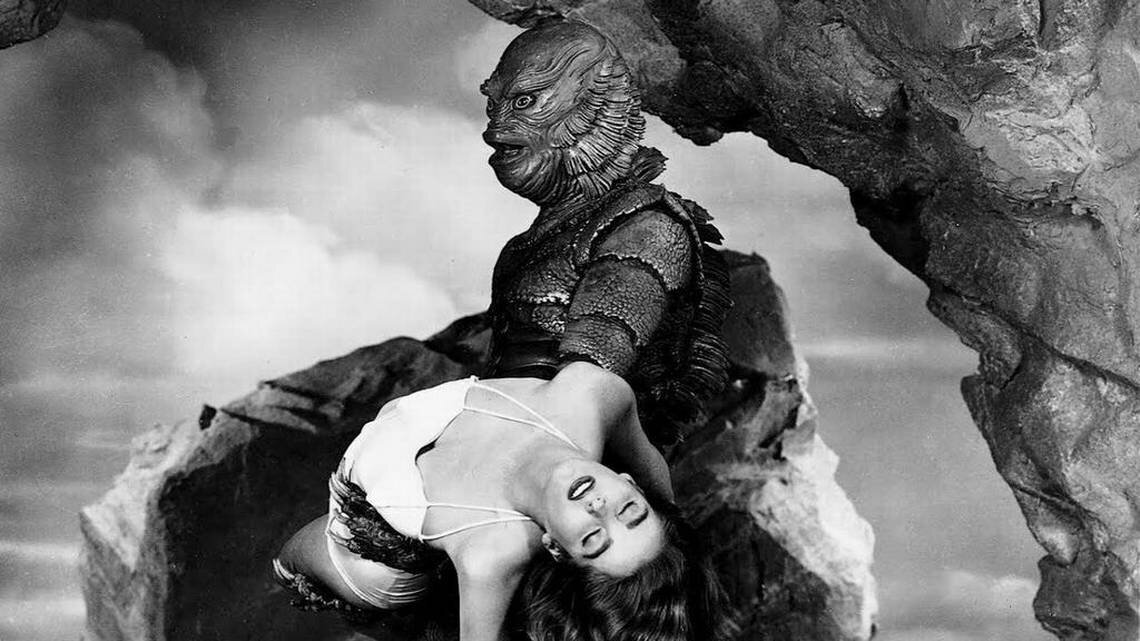
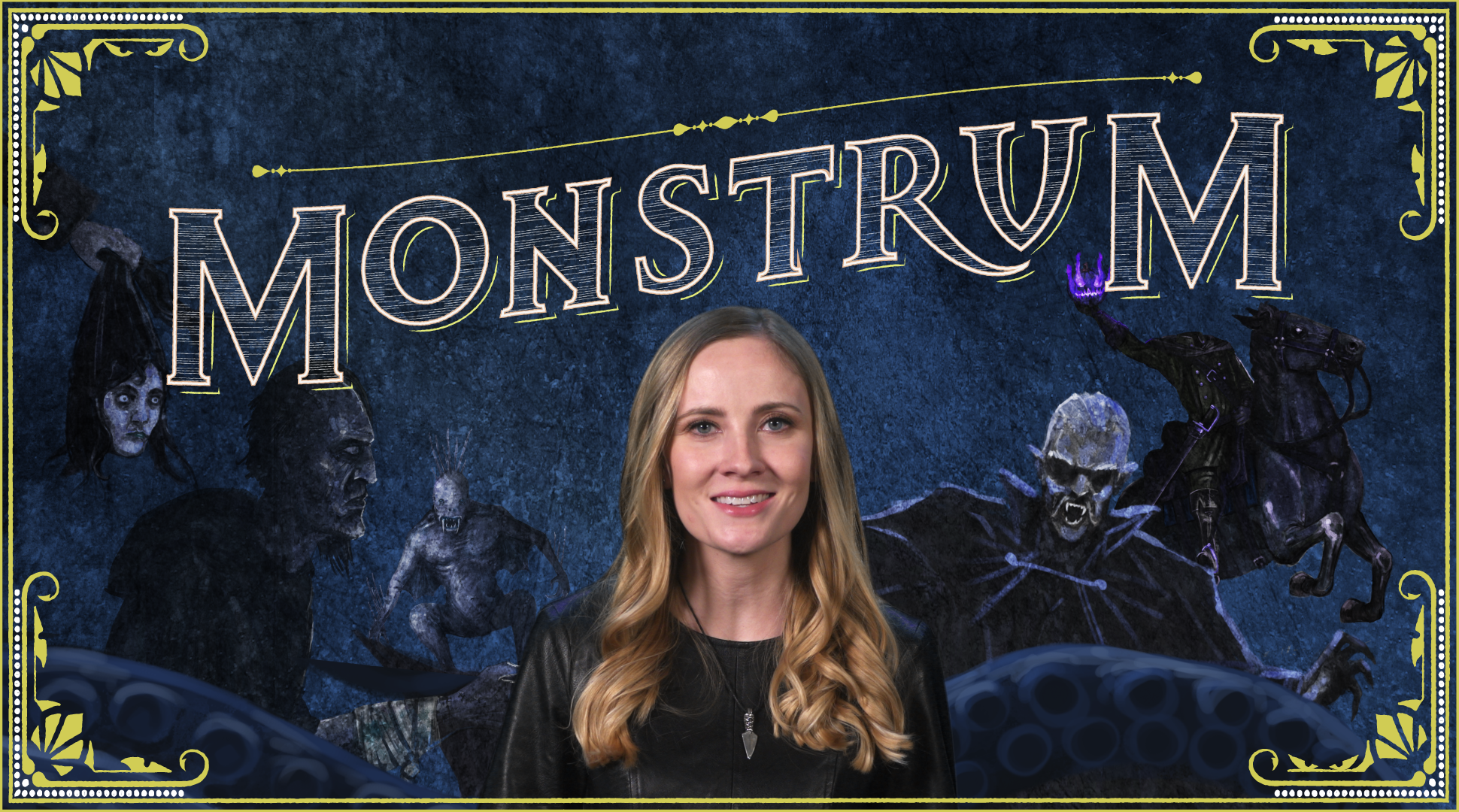


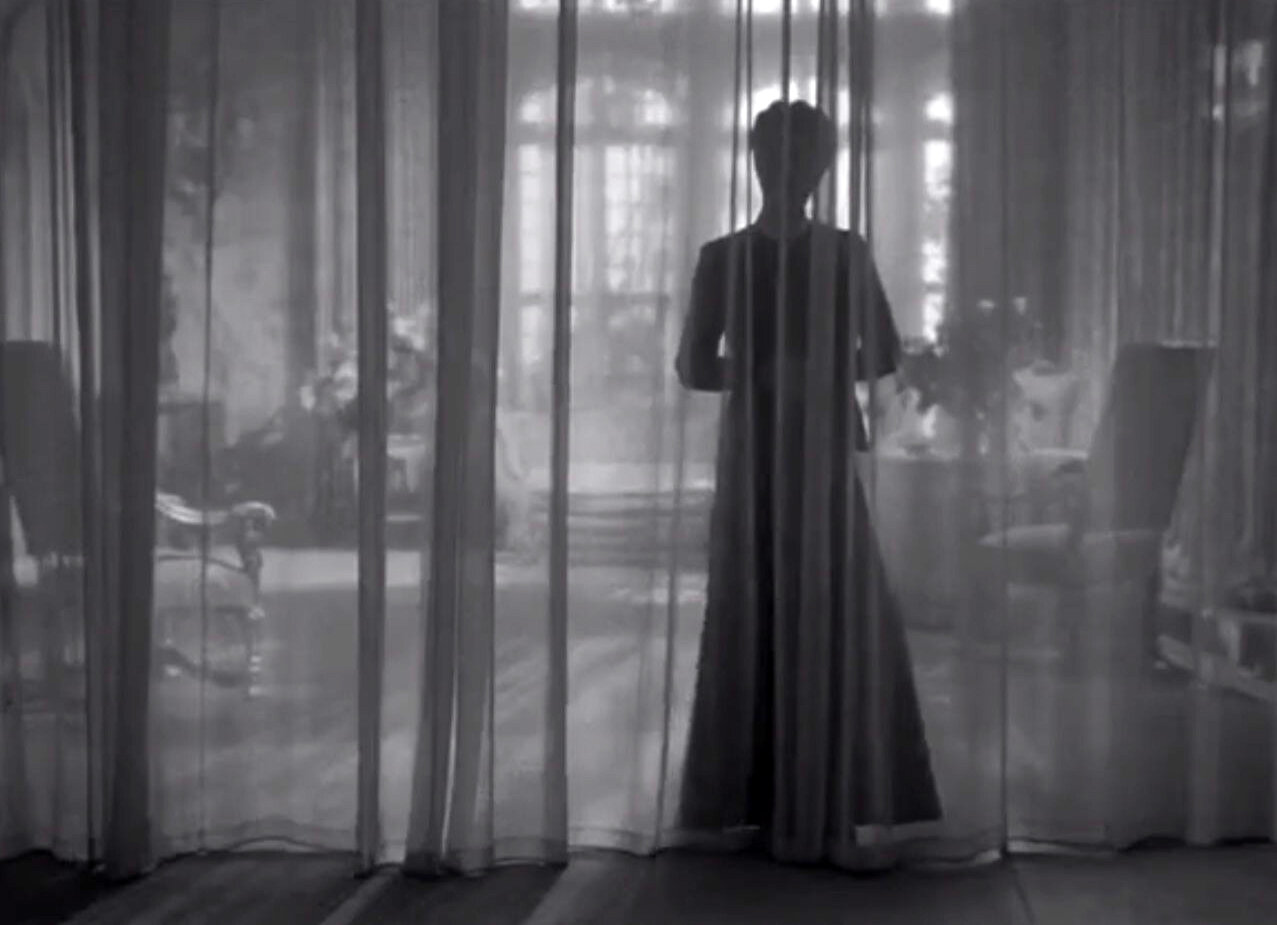


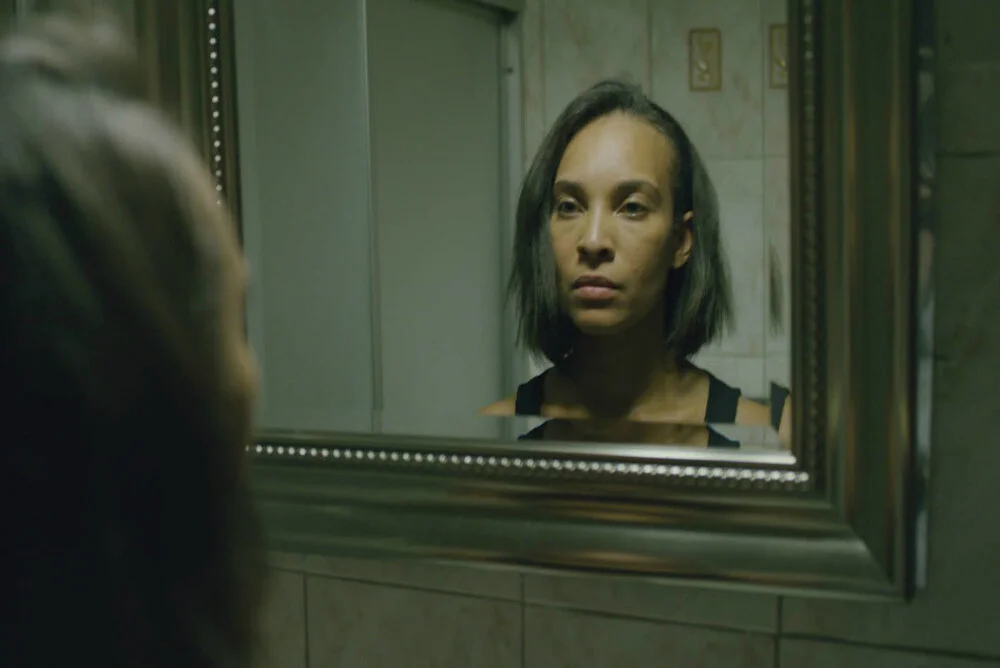
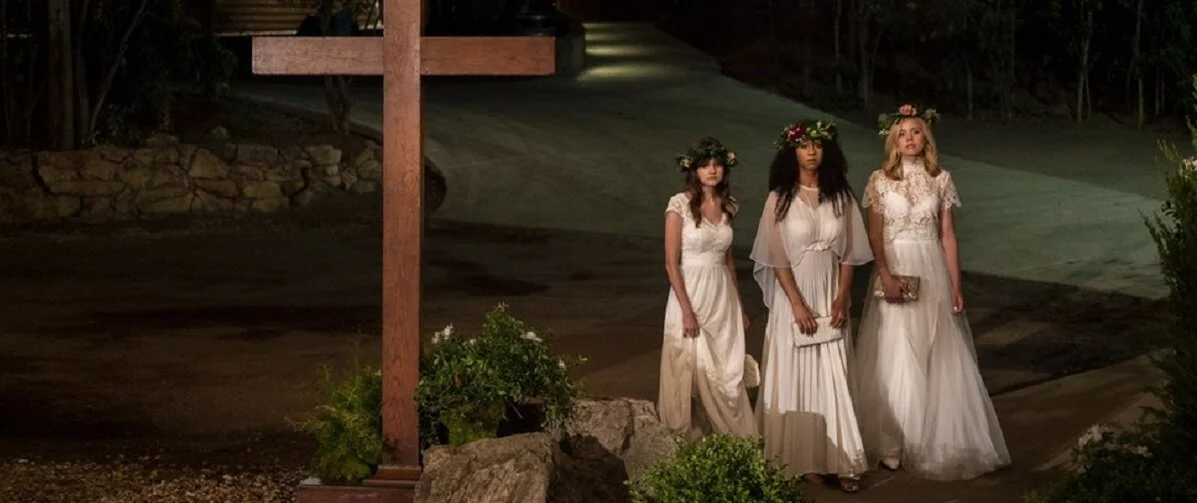
![[Editorial] 5 Slasher Short Horror Films](https://images.squarespace-cdn.com/content/v1/5fe76a518d20536a3fbd7246/1696358009946-N8MEV989O1PAHUYYMAWK/Screenshot+2023-10-03+at+19.33.19.png)
![[Ghouls Podcast] Maniac (2012) with Zoë Rose Smith and Iona Smith](https://images.squarespace-cdn.com/content/v1/5fe76a518d20536a3fbd7246/1696356006789-NYTG9N3IXCW9ZTIJPLX2/maniac.jpg)
![[Editorial] If Looks Could Kill: Tom Savini’s Practical Effects in Maniac (1980)](https://images.squarespace-cdn.com/content/v1/5fe76a518d20536a3fbd7246/1694952175495-WTKWRE3TYDARDJCJBO9V/Screenshot+2023-09-17+at+12.57.55.png)
![[Editorial] Deeper Cuts: 13 Non-Typical Slashers](https://images.squarespace-cdn.com/content/v1/5fe76a518d20536a3fbd7246/1694951568990-C37K3Z3TZ5SZFIF7GCGY/Curtains-1983-Lesleh-Donaldson.jpg)
![[Editorial] Editor’s Note: Making a slash back into September](https://images.squarespace-cdn.com/content/v1/5fe76a518d20536a3fbd7246/1694354202849-UZE538XIF4KW0KHCNTWS/MV5BMTk0NTk2Mzg1Ml5BMl5BanBnXkFtZTcwMDU2NTA4Nw%40%40._V1_.jpg)
![[Editorial] 8 Mind Horror Short films](https://images.squarespace-cdn.com/content/v1/5fe76a518d20536a3fbd7246/1693504844681-VPU4QKVYC159AA81EPOW/Screenshot+2023-08-31+at+19.00.36.png)
![[Editorial] Eat Shit and Die: Watching The Human Centipede (2009) in Post-Roe America ](https://images.squarespace-cdn.com/content/v1/5fe76a518d20536a3fbd7246/1691245606758-4W9NZWE9VZPRV697KH5U/human_centipede_first_sequence.original.jpg)
![[Editorial] Top 15 Female-Focused Mind Horror Films](https://images.squarespace-cdn.com/content/v1/5fe76a518d20536a3fbd7246/1691247166903-S47IBEG7M69QXXGDCJBO/Image+5.jpg)
![[Editorial] 8 Body Horror Short films](https://images.squarespace-cdn.com/content/v1/5fe76a518d20536a3fbd7246/1690838270920-HWA5RSA57QYXJ5Y8RT2X/Screenshot+2023-07-31+at+22.16.28.png)
![[Editorial] Metal Heart: Body Dysmorphia As A Battle Ground In Tetsuo: The Iron Man (1989)](https://images.squarespace-cdn.com/content/v1/5fe76a518d20536a3fbd7246/1690190127461-X6NOJRAALKNRZY689B1K/Screenshot+2023-07-24+at+10.08.27.png)
![[Editorial] Top 15 Female-Focused Body Horror Films](https://images.squarespace-cdn.com/content/v1/5fe76a518d20536a3fbd7246/1689081174887-XXNGKBISKLR0QR2HDPA7/download.jpeg)
![[Editorial] Editor’s Note: Getting sticky, slimy & sexy with body horror](https://images.squarespace-cdn.com/content/v1/5fe76a518d20536a3fbd7246/1689072388373-T4UTVPVEEOM8A2PQBXHY/Society-web.jpeg)
![[Ghouls Podcast] The Last House on the Left (2009) with Zoë Rose Smith and Jerry Sampson](https://images.squarespace-cdn.com/content/v1/5fe76a518d20536a3fbd7246/1687863043713-54DU6B9RC44T2JTAHCBZ/last+house+on+the+left.jpg)
![[Editorial] They’re Coming to Re-Invent You, Barbara! Night of the Living Dead 1968 vs Night of the Living Dead 1990](https://images.squarespace-cdn.com/content/v1/5fe76a518d20536a3fbd7246/1687199945212-BYWYXNBSH00C4V3UIOFQ/Screenshot+2023-06-19+at+19.05.59.png)
![[Editorial] 8 Short & Feature Horror Film Double Bills](https://images.squarespace-cdn.com/content/v1/5fe76a518d20536a3fbd7246/1687770541477-2A8J2Q1DI95G8DYC1XLE/maxresdefault.jpeg)

![[Editorial] Soho Horror Film Festival: Interview with Aimee Kuge on Cannibal Mukbang](https://images.squarespace-cdn.com/content/v1/5fe76a518d20536a3fbd7246/1701808004722-9M8SZ2UXY52QBQBR4NTI/img20230818_15150780.JPG)
![[Editorial] 10 Films & Events to Catch at Soho Horror Film Fest 2023](https://images.squarespace-cdn.com/content/v1/5fe76a518d20536a3fbd7246/1700819417135-299R7L4P0B676AD3RO1X/Screenshot+2023-11-24+at+09.41.52.png)
![[Editorial] 9 Horror Nintendo Switch Games To Play](https://images.squarespace-cdn.com/content/v1/5fe76a518d20536a3fbd7246/1697214470057-3XZXX8N4LYIMDFWS6Z3P/Screenshot+2023-10-13+at+17.20.13.png)
![[Mother of Fears] Mothering in Silence in A Quiet Place (2018)](https://images.squarespace-cdn.com/content/v1/5fe76a518d20536a3fbd7246/1696445921315-HZJ2DZYQIH6VVWXBO2YL/Screenshot+2023-10-04+at+19.52.29.png)
![[Event Review] Highlights from Mayhem Film Festival 2023](https://images.squarespace-cdn.com/content/v1/5fe76a518d20536a3fbd7246/1697624582491-MPT2VB9RRGU6OG7L6UKL/Mayhem+2023.jpg)
![[Editorial] Mayhem Festival: Interview with Thomas Sainsbury on Loop Track (2023)](https://images.squarespace-cdn.com/content/v1/5fe76a518d20536a3fbd7246/1697186472899-WC4RR0TW7L7LMFEBGPA2/Tom+Sainsbury.jpg)
![[Editorial] Keeping Odd Hours: A Retrospective on Near Dark (1987)](https://images.squarespace-cdn.com/content/v1/5fe76a518d20536a3fbd7246/1696445070868-HU9YIL3QPBCL1GW47R3Z/Screenshot+2023-10-04+at+19.36.53.png)
![[Editorial] 5 Female Focused Horror Book Recommendations](https://images.squarespace-cdn.com/content/v1/5fe76a518d20536a3fbd7246/1696441981361-52EQCTJ7AT2QF1927GM7/919xtm6d3fL._AC_UF894%2C1000_QL80_.jpg)
![[Editorial] What to Watch at This Year's Cine-Excess International Film Festival 2023](https://images.squarespace-cdn.com/content/v1/5fe76a518d20536a3fbd7246/1697213510960-REV43FEOZITBD2W8ZPEE/Screenshot+2023-10-13+at+17.01.15.png)
![[Editorial] Cherish Your Life: Comfort in the SAW Franchise Throughout and Beyond the COVID-19 Pandemic](https://images.squarespace-cdn.com/content/v1/5fe76a518d20536a3fbd7246/1695487675334-MYPCPYYZQZDCT548N8DI/Sc6XRxgSqnMEq54CwqjBD5.jpg)
![[Editorial] The Art of Horror in Metal](https://images.squarespace-cdn.com/content/v1/5fe76a518d20536a3fbd7246/1695486401299-E5H2JNNJT26HKN0CI7WC/Screenshot+2023-09-23+at+17.20.28.png)






















![[Editorial] 9 Best Slashers Released Within 10 Years of Scream (1996)](https://images.squarespace-cdn.com/content/v1/5fe76a518d20536a3fbd7246/1695478839037-LOFHGVM3H6BMSZW7G83M/Screenshot+2023-09-23+at+15.15.11.png)
![[Mother of Fears] Mother Vs. Monster in Silent Hill (2006)](https://images.squarespace-cdn.com/content/v1/5fe76a518d20536a3fbd7246/1695485781119-H6GNP0G3J2TLPAOIABV7/Screenshot+2023-09-23+at+17.11.56.png)
![[Editorial] 9 Terrifying Cerebral Visions in Horror Movies](https://images.squarespace-cdn.com/content/v1/5fe76a518d20536a3fbd7246/1693509801235-X23OL50T1DVGECH0ZJK2/MV5BMjQ0MTg2MjQ4MV5BMl5BanBnXkFtZTgwMTU3NDgxMTI%40._V1_.jpg)
![[Mother of Fears] I Don’t Wanna Be Buried in a Pet Sematary (1989) and (2019)](https://images.squarespace-cdn.com/content/v1/5fe76a518d20536a3fbd7246/1691328766069-QFNAVJOMFZVZ5CLU1RWM/Screenshot+2023-08-06+at+14.23.13.png)

I can sometimes go months without having a panic attack. Unfortunately, this means that when they do happen, they often feel like they come out of nowhere. They can come on so fast and hard it’s like being hit by a bus, my breath escapes my body, and I can’t get it back.